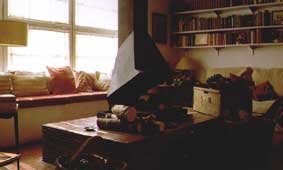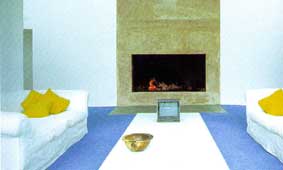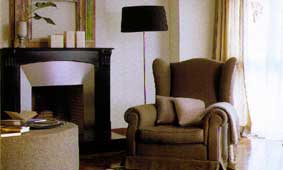|
Practical Fireplace Placement GuideThe first tip in this fireplace placement guide is to consider the room decor. This ensures that the style fit in harmoniously with the overall look. All color, materials and shapes must be totally integrated into the whole. It is advisable to ensure good visibility for the flames in order to fully enjoy the light and heat of the fire. Lastly the placement of the fireplace with respect to the surrounding elements and the distribution of the furniture around it must also be taken into account. Key focus is on the seating. FurnishingAnother aspect to consider in the fireplace placement guide is the furnishing. If the room is designed solely for the use of the fireplace, the placement of the furniture is simple, as the fireplace takes center stage. A single functional area around the fireplace is the key to this type of distribution. On the other hand, if the fireplace is part of a room that’s divided into several areas, a balance needs to be struck so that the fireplace is the focal point when the fire is lit but merges into the setting when not in use.
In this case, the placement of the furniture is multidirectional, even though this may cause interference between the different functional areas. The aim here is that the field of vision from the seating is diversified when the fire is not lit and goes beyond the simple dark hollow of the hearth. So, the seating serves primarily as functional living room furniture, and only secondarily as vantage points for contemplating the fireplace. In both cases, however, it is advisable to make the visibility of the flames and the warmth as similar as possible for all the seating. The furnishing around a fireplace can be characterized by a radial, transversal or frontal distribution. Fireplace Placement Guide vs Distribution DirectionTo explain this further, here’s a quick summary: Radial - If the fireplace is placed in the centre, or isolated and set off to the side, the most common way to distribute the seating is in a circle or polygon, either by way of benches or individual seats. If the fireplace is sunk into the floor, cushions placed around it will serve as informal seating. This would be a typical example of unidirectional distribution that places full emphasis on the fireplace.

Transversal - A transversal distribution in respect to the mouth of the fireplace favors visual communication with the other functional elements of the room. This layout allows the flames to be contemplated while at the same time keeping other horizontal visual viewpoints open for enjoyment. The major drawback is that the most distant seats receive significantly less warmth.


Fireplace Decoration TipsBear in mind that when the fireplace is not in use for extended period of time e.g. summer, it can become a sterile void. By adding decorative elements, it can be transformed into an interesting space. Some suggestions of decorative elements are plants, candles, stones or unusually shaped logs. All these make good substitutes for the focus of attention provided by a blazing fire You may also want to take a look at:
Click on highlighted text to return to the top of fireplace placement guide |



